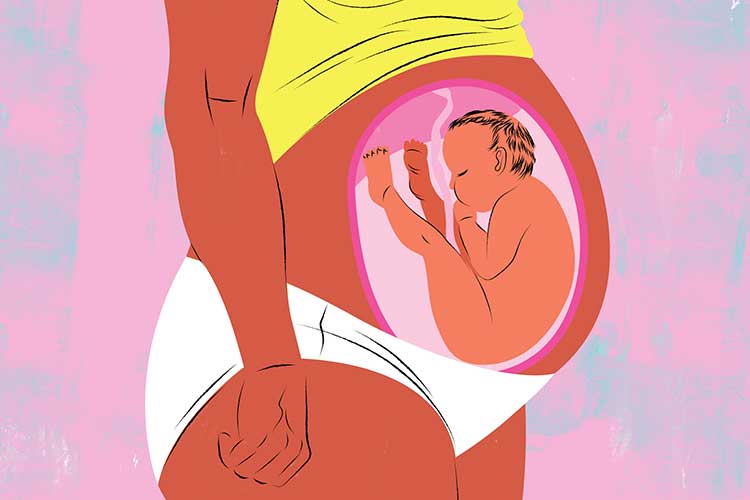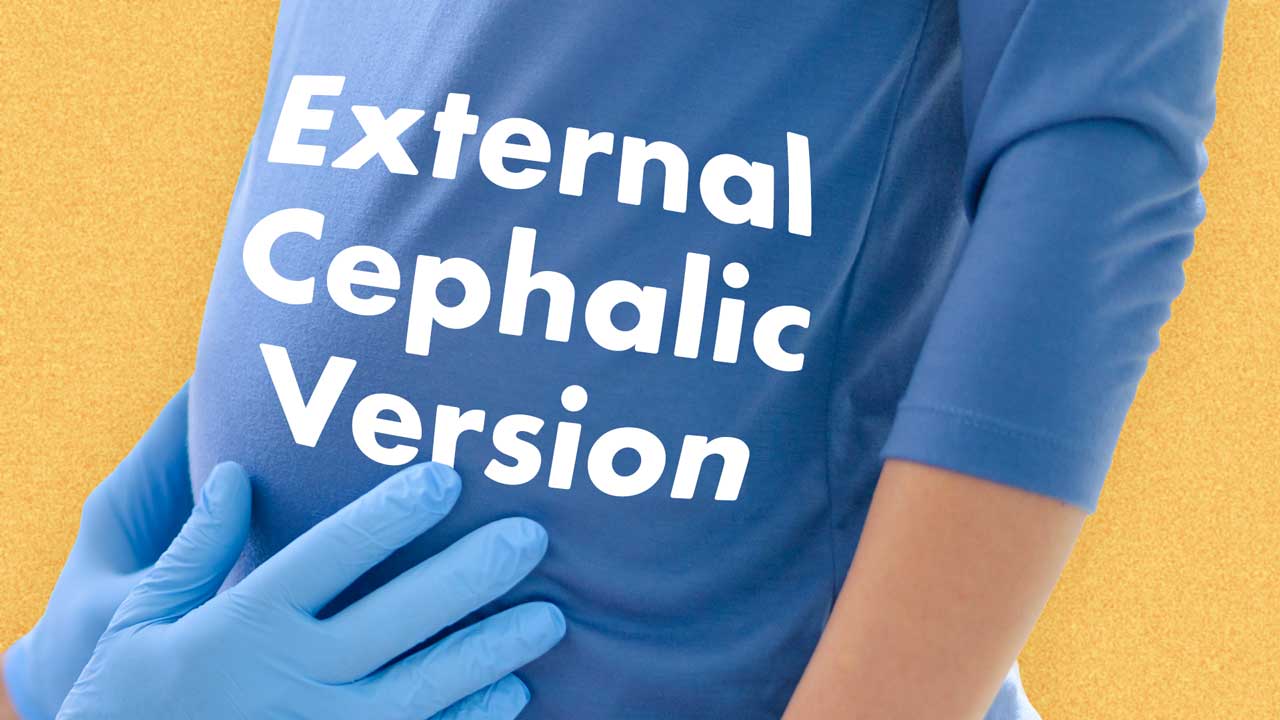The potential risks of breech delivery are a concern for both pregnant patients and midwives alike, with the majority of patients opting for an elective caesarean birth rather than attempting a vaginal breech birth.
In many cases, however, an external cephalic version offers a simple and practical solution that carries minimal risk and offers the potential for a normal delivery to take place.
Breech presentations tend to complicate about 3 to 4% of all term deliveries and are more common before term, with approximately 25% of cases presenting as breech before 28 weeks, falling to just 7% by 32 weeks (Gray & Shanahan 2022).
They are also more common in cases where there has been a previous breech presentation (Gray & Shanahan 2022).
What is External Cephalic Version?
The best-known and most reliable method of turning the breech is an external cephalic version (ECV), which involves the manipulation of the fetus through the abdomen to a cephalic presentation (Impey et al. 2017).
The procedure is usually offered from 36 weeks in nulliparous patients and from 37 weeks in multiparous patients. This typically results in about a 50% success rate when the practitioner is experienced in the procedure (Impey et al. 2017).
ECV is typically most successful at a gestational age of 37 weeks (Cleveland Clinic 2022).

How Successful is External Cephalic Version?
The most important considerations for patients and midwives are how successful the ECV is likely to be and what factors can influence the outcome.
Factors predictive of success include:
- Multiparity
- Presenting fetal part not being engaged into the birthing parent’s pelvis
- Relaxed uterus
- Fetal head being easily palpable
- Birthing parent weight below 65 kg
- An amniotic fluid index over 10 cm
- Posterior placenta
- A lateral fetal spine position
- A complete breech fetal presentation.
(Ehrenberg-Buchner 2023)
Risks and Complications Associated with External Cephalic Version
Generally speaking, an external cephalic version has a very low complication rate. However, although rare, there are some risks associated with this procedure, including:
- Fetal heart abnormalities
- Premature rupture of the membranes
- Emergency caesarean birth
- Cord prolapse
- Placental abruption
- Fetomaternal hemorrhage
- Stillbirth
- Vaginal bleeding
- Premature labour.
(Shanahan & Gray 2022)
Overall, an external cephalic version is safe as long as it takes place in a setting where an emergency caesarean birth could be performed if needed (Shanahan & Gray 2022).
Contraindications for External Cephalic Version
These may include:
- Births where caesarean delivery is required, e.g. placenta praevia, vasa praevia
- Recent antepartum haemorrhage
- Abnormal cardiotocography
- Major fetal or uterine anomalies
- Ruptured membranes
- Hyperextended fetal head
- Growth restriction of the fetus
- Small-for-gestational-age fetus
- Proteinuric preeclampsia
- Oligohydramnios
- Major fetal anomalies
- Multiple pregnancy, except delivery of a second twin.
(Ehrenberg-Buchner 2023; Shanahan & Gray 2022)
Bearing all of these risk factors in mind, ECV should always be performed where facilities for ultrasound monitoring and immediate delivery are available (Shanahan & Gray 2022). Cardiotocography should also always be performed after the procedure (Pregnancy, Birth and Baby 2022).
Reducing the Rate of Caesarean Births

Avoiding the need for a caesarean or vaginal breech birth is the ultimate goal of ECV. Attempting one or more external cephalic versions will result in a baby who is head-down at the time of birth in 33% of first-time patients and 61% of patients who have given birth before (Dekker 2021).
Even though some people with breech presentations are not suitable candidates for ECV, the procedure does offer many the potential to avoid major abdominal surgery, not only for their current pregnancy but for future pregnancies as well, as many would face repeat caesarean births.
Topics
References
- Cleveland Clinic 2022, External Cephalic Version (ECV), Cleveland Clinic, viewed 21 November 2023, https://my.clevelandclinic.org/health/treatments/22979-ecv
- Dekker, R 2021, ‘The Evidence on: Breech Version’, Evidence Based Birth, 29 March, viewed 21 November 2023, https://evidencebasedbirth.com/what-is-the-evidence-for-using-an-external-cephalic-version-to-turn-a-breech-baby/
- Ehrenberg-Buchner, S 2023, External Cephalic Version, Medscape, viewed 21 November 2023, https://emedicine.medscape.com/article/1848353-overview
- Gray, CJ & Shanahan, MM 2022, ‘Breech Presentation’, StatPearls, viewed 21 November 2023, https://www.ncbi.nlm.nih.gov/books/NBK448063/
- Impey, LWM, Murphy DJ, Griffiths M & Penna LK on behalf of the Royal College of Obstetricians and Gynaecologists 2017, ‘External Cephalic Version and Reducingthe Incidence of Term Breech Presentation’, BJOG: An International Journal of Obstetrics & Gynaecology, vol. 124, no. 7, viewed 21 November 2023, https://obgyn.onlinelibrary.wiley.com/doi/epdf/10.1111/1471-0528.14466
- Pregnancy, Birth and Baby 2022, External Cephalic Version (ECV), Healthdirect, viewed 21 November 2023, https://www.pregnancybirthbaby.org.au/external-cephalic-version-ecv
- Shanahan, MM & Gray, CJ 2022, ‘External Cephalic Version’, StatPearls, viewed 21 November 2023, https://www.ncbi.nlm.nih.gov/books/NBK482475/
 New
New 
